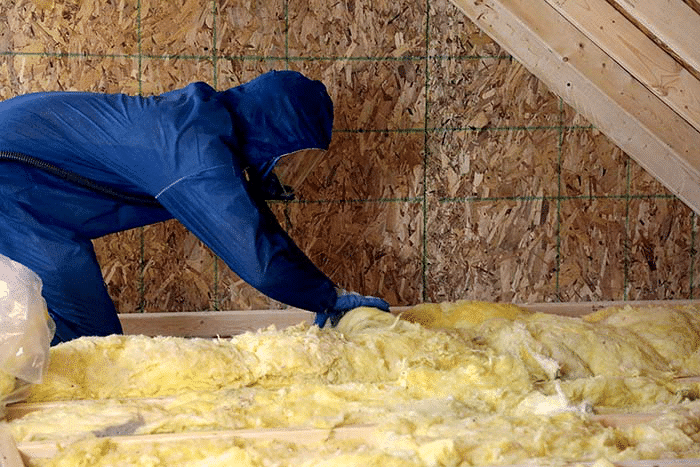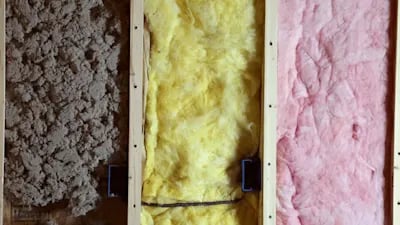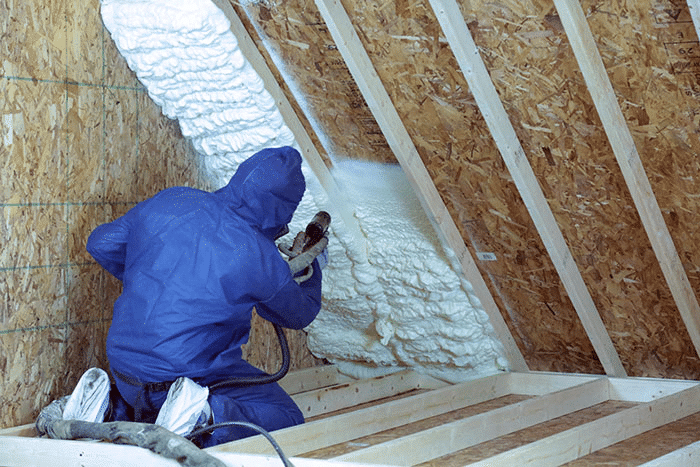Why Does Old Insulation Need to be Removed from the Attic Before Installing Spray Foam?


Are you in the process of having your attic insulated with spray foam, but you want to know why your old traditional insulation needs to be removed?
You might be thinking that the old cellulose or fiberglass material on the floor of the attic will add additional insulation up there, but that isn’t the case. That old insulation could cause more problems than it’s worth and hinder the spray foam’s ability to efficiently insulate your attic.
RetroFoam of Michigan has more than 17 years of experience insulating thousands of attics across the lower peninsula and greater Toledo area. We know that the old traditional insulation on the attic floor must be removed before the roof deck can be sprayed with foam because it hinders the airflow in your home.
You're here to better understand why old insulation removal is so important. We'll discuss not only removing old insulation from an attic but also how that helps with circulation throughout the home.
Creating Circulation Throughout the Home by Removing Old Insulation from the Attic
The first thing we look at when insulating an attic is circulation. That’s because heat rises from your home into the attic, and without an air barrier, that hot air will escape right out of your roof.
Think of your home like a lava lamp. As the wax at the bottom of the glass bottle begins to heat up, it shoots to the top where it hovers for a moment, but then drops back down to the bottom as it cools. This cycle is repeated over and over again.
The heat rises, and the cooler air falls, but it circulates throughout your house -- more on circulation in your home in just a bit.
Why Remove the Old Fiberglass or Cellulose When Insulating the Attic Roof Deck

The roof deck should be insulated for several reasons – protecting the roof, giving your attic a space that is conditioned, and ensuring there are no drafts in your attic.
When the roof deck is insulated, the air moves into the attic, hits the roof where it cools down, and then falls back down. This means your attic is now a conditioned space, which means you heat and cool that area. You need to have air moving freely in and out of that area.
If there is a layer of fiberglass or cellulose insulation on the attic floor, as the air from your living space heats up and rises, it will want to move into your attic. You want to let that air get into that space without the hindrance of the old insulation.
Why Does Circulation Throughout the Attic Matter?
Airflow circulation is crucial in your house because your furnace, AC unit, and mechanical ventilation move air throughout your home.
You want that air to move freely because of the cold air intakes in your home that takes in the cooler air inside your house, running it through the furnace where it warms the air back up and blows it back out.
If the air isn’t moving freely through your home and if it isn’t circulating efficiently, those cold air returns have to work harder to suck air through your house. This means that the vents that are blowing hot air have to force the air harder.
It also makes your appliances work harder. They will need more power to suck the air and blow it back into the house. Your appliances will be working harder, thus wearing themselves out faster. They will be working more minutes and hours, so you will be paying more to run them.
This lends itself to one of the main reasons you want to remove the old insulation from the floor of the attic when insulating the roof deck with spray foam. The old insulation hinders the airflow throughout the entire house and attic.
Other Reasons to Remove the Old Attic Insulation

Another reason you will want to remove the insulation on the attic floor is that if the airflow is hindered, there will be a difference in temperature from the attic to the rest of the house.
For example, in the summer, if it is 85 degrees outside, it is around 100 degrees in the attic, and the house is about 70 degrees. That is about a 30-degree difference between your living space and your attic.
Any time there is a temperature difference, there is a potential for condensation – the higher the temperature difference, the higher the probability of condensation because you have a bigger window for a dew point to fall into. This also has to do with the humidity in your home.
The old insulation on the floor of the attic will almost always be cellulose or fiberglass, which are both fibrous materials that are both proven to retain and hold moisture and foster and invite condensation along with those moisture issues.
This condensation can then move into the drywall of your ceiling and the trusses inside the attic floor. The big issue is this creates the perfect condition for mold to grow not only in the insulation but in your ceiling and other areas of your attic.
If this mold is allowed to form and continue to grow, the cold air returns will pull that contaminated air throughout your home. Here is how that happens – the hot air rises and will stop at the drywall because the old insulation hinders it. As the air moves across the now contaminated ceiling, it will move to the cold air intake and get recirculated throughout the house.
The bottom line is the old insulation needs to be removed because it hinders the airflow into the attic, it can promote mold growth, and it is dirty. The old insulation on the floor has been exposed to air from the outside because the attic is vented.
Adding Spray Foam Insulation to Existing Attic Floor
In some rare cases, we find that it is more beneficial to insulate the attic floor as opposed to the roof deck. When this happens, there are some things to take into consideration.
The first thing to think about is circulation. When you insulate the floor of the attic with spray foam, you are essentially cutting it off from the rest of the house, creating an air seal. If this is done, your attic will need to be vented. The purpose of the vents is to bring that cooler air from outside into the attic to help it maintain a constant temperature, according to Energy Star.
Another thing to take into consideration is the condensation that will form in your attic. The good thing about spray foam insulation on the floor of the attic is when you have that big temperature difference, the dew point will always be inside the foam as long as it is at a thickness that creates an air barrier. Even if there is a dew point in the spray foam insulation, condensation won’t form on the warm side of the drywall like it would with a traditional type of insulation.
The final thing to consider is that any old insulation on the floor of the attic has to be removed before the spray foam can be applied. The spray foam cannot work efficiently if any other material is on the floor of the attic. If you spray foam on top of old insulation, you won’t be able to get an air seal.
See the Benefits of Spray Foam Insulation for an Existing Home After Old Attic Insulation Removal
Now that you have a better understanding of why removing old insulation from the attic should be done before spray foam insulation can be installed, you may be wondering about the benefits of foam insulation for the rest of your home.
If you live in Michigan’s lower peninsula or the greater Toledo area and would like to schedule a free estimate to speak with one of our project managers about insulating other areas of your home, give us a call at 866-900-3626 or fill out a free estimate form on our website.
You can also find a ton of great resources in the Learning Center on our website.
Related Articles
Does Mold Remediation Need to Happen Before Spray Foam is Installed in the Attic?
How Much Insulation Do I Need in My Attic?
About Amanda Ringler
Amanda previously has worked as a breaking news and crime reporter, TV news producer, and editor in Flint and Detroit. Throughout her career as a journalist, she has won several awards from The Society of Professional Journalists - Detroit Chapter and the Michigan Press Association. As part of the RetroFoam of Michigan family, Amanda uses her experience as a journalist to write content that will help educate homeowners on the benefits of foam insulation. When Amanda isn’t writing, she’s spending time with her husband and rescued huskies. She also loves knitting, making art, cooking, and hosting dinner and a movie night for friends and family.

.jpg)

